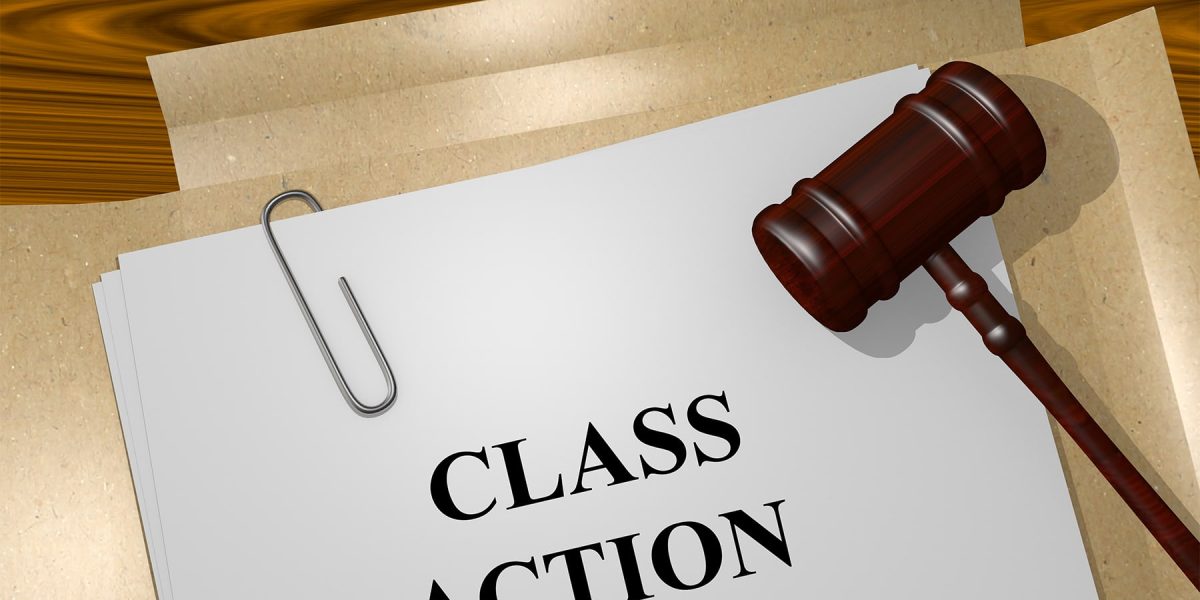Exploring Class Activity Lawsuits: What You Required to Know
Class activity legal actions have actually come to be significantly widespread in today's legal landscape, with people signing up with forces to seek remedy versus companies and firms. In this conversation, we will certainly discover the ins and outs of course activity suits, dropping light on their definition, the needs for filing, and the potential benefits and downsides involved.
The Definition of Course Activity Suits
Just what is the meaning of a course action claim? A class activity suit is a lawful activity filed by a group of people that have similar insurance claims versus a defendant. It enables a multitude of people, called the class members, to collaborate and pursue their claims jointly, instead than each individual filing a different legal action. When the number of possible plaintiffs is too big for private legal actions to be functional, Course activity lawsuits are usually brought. They are frequently made use of in instances including customer defense, item responsibility, protections fraud, and employment issues.
Among the crucial elements of a class activity lawsuit is that the lead complainant, likewise referred to as the class representative, represents the rate of interests of all the class members. The court assigns the lead complainant based on their capability to relatively and sufficiently stand for the class. The lead plaintiff functions closely with the course action attorney to look for and build a solid case payment or other treatments in support of the whole course.
In order for a course action lawsuit to proceed, the court has to accredit the class. This suggests that the court figures out that the suit satisfies certain needs, such as numerosity (a big adequate variety of class participants), commonality (typical questions of regulation or truth), typicality (the cases of the lead plaintiff are regular of the course), and adequacy of representation (the lead plaintiff and class advise can representing the course's rate of interests) As soon as the class is licensed, the suit can progress, and any judgment or settlement got to will put on all course members unless they select to opt-out.
Class activity legal actions serve an important objective in providing accessibility to justice for individuals that might not have the resources to pursue their cases separately. They also promote effectiveness in the legal system by combining comparable claims right into a single action, lowering the concern on both the court and the celebrations involved.
Demands for Submitting a Class Action Suit

An additional need is that the class has to be adequately numerous. The exact number of class participants required may vary depending on the jurisdiction and the nature of the instance. However, it is generally anticipated that the class must be huge sufficient that joining all the private plaintiffs into a solitary legal action is a lot more effective than having multiple separate suits.
Additionally, it is necessary that the course agent, that is the specific or entity bringing the legal action in support of the course, has regular cases and defenses to those of the class members. The representative should likewise be able to sufficiently and relatively represent the passions of the entire course.

Benefits and Drawbacks of Class Activity Lawsuits
Course activity claims use both benefits and drawbacks for complainants and offenders entailed in the legal process. On the one hand, among the substantial advantages of class activity legal actions is that they supply a effective and affordable method for individuals with similar claims to go after justice collectively. By settling many similar instances into one suit, class activities improve the legal process and save time and sources for both plaintiffs and defendants.
One more advantage of class activity about his lawsuits is that they enable people with minimal resources to seek settlement for their problems. In situations where the possible recuperation is small, private claims may not be economically practical. However, by signing up with pressures in a course activity, plaintiffs can pool their sources and raise their possibilities of obtaining a fair resolution.
Additionally, class actions can advertise social modification by holding companies liable for their actions. By accentuating widespread transgression or malfunctioning items, class activities can pressure firms to transform their practices, enhance item safety and security, or carry out reforms.
Nonetheless, read here course activities likewise have downsides. One possible downside is that individual plaintiffs might have limited control over the litigation process and the best end result of the case. The lead plaintiffs and their attorneys normally make essential decisions in behalf of the whole class, which might not constantly align with the private rate of interests of each course participant.
Furthermore, course activities can be lengthy and time-consuming, typically taking years to reach a resolution. The intricacy and size of these legal actions can cause hold-ups and prolonged litigation, which can be irritating for both defendants and plaintiffs seeking a timely resolution.
Steps Associated With a Class Activity Suit
The procedure of a course action legal action commonly starts with the recognition of a potential course and the filing of a problem. When a group of people who share comparable claims against an accused is determined, the lead complainant, or class representative, submits a complaint in support of the entire course. This grievance outlines the supposed wrongdoing and looks for problems or other alleviation for all participants of the course.
After the issue is filed, the court will certainly figure out whether the case satisfies the requirements for course certification. These needs usually include numerosity (a large sufficient course), commonality (comparable lawful claims), typicality (the lead plaintiff's cases are depictive of the course), and adequacy of depiction (the lead complainant and their lawyer can appropriately represent the class's passions)
If the court certifies the class, notification is supplied to all potential class participants, offering them the opportunity to opt-out if they want to seek their very own specific claims - Assertio class action lawsuit. If a sufficient number of class participants continue to be, the case will continue to the exploration phase, where both sides gather proof and details appropriate to the claims
Adhering to discovery, the celebrations might participate in settlement negotiations or continue to test. If the case mosts likely to trial and the course dominates, the court will certainly establish the proper damages or relief to be awarded to the class members.
Recent Site Class Activity Claims
With a strong understanding of the actions associated with a course activity claim, it is currently vital to examine some recent landmark instances that have actually made a significant impact in the lawful landscape. Archer-Daniels-Midland class action lawsuit. These situations have not only shaped the means course action suits are conducted however have also caused adjustments in numerous markets
One such site instance is the Volkswagen discharges detraction, which resulted in the largest course action negotiation in automobile history. In 2015, it was straight from the source revealed that Volkswagen had actually set up software application in their cars to rip off exhausts examinations. This deception affected millions of customers worldwide, causing a class action lawsuit. The settlement gotten to in 2016 amounted to approximately $15 billion, making up affected automobile proprietors and imposing fines on Volkswagen.
Another notable instance is the Johnson & Johnson baby powder claim. Hundreds of women submitted suits versus the company, declaring that their talcum powder products created ovarian cancer. In 2018, a court awarded $4.7 billion in damages to 22 complainants. This case increased concerns concerning the safety of baby powder and motivated Johnson & Johnson to modify their item labeling.
These current landmark situations show the power of course activity lawsuits in holding companies answerable for their actions and seeking justice for afflicted people. They work as instances of how class activity legal actions can produce significant modifications and secure the civil liberties of customers.
Conclusion
Finally, class action suits are a legal system that permits a team of individuals to collectively seek justice for an usual complaint. While they supply several benefits such as effectiveness and cost-effectiveness, there are likewise disadvantages such as prospective for restricted payment and prolonged legal procedures. Understanding the steps and requirements associated with submitting a course action claim is critical for people seeking to pursue this legal avenue. Recent spots course activity claims have actually highlighted the value of such instances in promoting for consumer rights and corporate accountability.
One of the essential elements of a course action lawsuit is that the lead complainant, likewise known as the course agent, represents the passions of all the class participants.In order for a class activity claim to proceed, the court must accredit the class. This suggests that the court figures out that the suit fulfills specific demands, such as numerosity (a big enough number of course participants), commonality (usual concerns of law or fact), typicality (the insurance claims of the lead plaintiff are normal of the class), and adequacy of depiction (the lead plaintiff and class advice are capable of standing for the course's rate of interests) As soon as the class is accredited, the suit can relocate forward, and any type of judgment or negotiation reached will use to all course members unless they select to opt-out.
The process of a course activity suit commonly begins with the identification of a possible course and the declaring of a grievance.